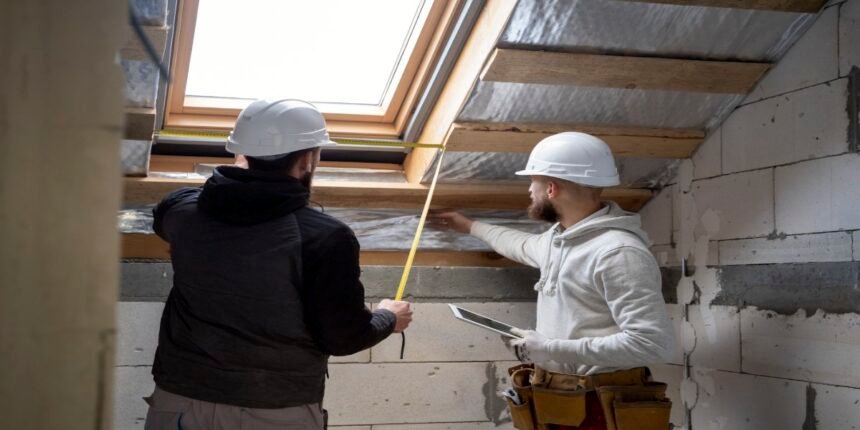In today’s fast-paced world, our living spaces often struggle to keep up with our evolving needs. Whether it’s a growing family, the need for a home office, or simply a desire for more room to breathe, many homeowners find themselves contemplating home additions. Home additions can be a smart solution to expand your living space while enhancing the value of your property. In this article, we’ll explore the ins and outs of home additions, providing you with valuable insights to make informed decisions.
Understanding Home Additions
Home additions refer to the process of expanding your existing living space by adding new rooms or expanding current ones. This can include anything from adding a new bedroom to creating a spacious family room or even extending your kitchen. The home additions are not just about increasing square footage; they are about creating a functional and aesthetically pleasing environment that meets your family’s needs.
Why Consider Home Additions?
There are numerous reasons why homeowners opt for additions:
- Growing Family Needs: As families grow, so do their space requirements. A new child, a relative moving in, or the need for a dedicated workspace can all prompt the need for additional space.
- Increased Property Value: Well-planned home additions can significantly increase the market value of your home. Buyers often look for homes that offer flexible living spaces.
- Avoiding the Hassle of Moving: Moving to a new home can be stressful and costly. Home additions allow you to stay in your beloved neighborhood while enhancing your living conditions.
- Personalization: Home additions give you the opportunity to customize your space according to your preferences, making it truly yours.
- Improved Quality of Life: A well-designed addition can enhance your lifestyle. Whether it’s a cozy reading nook, an expansive kitchen for family gatherings, or a dedicated home office, the right addition can significantly improve your day-to-day living experience.
- Maximizing Existing Space: Instead of relocating, home additions allow you to make the most out of your current property. This can be particularly valuable in urban areas where real estate is at a premium.
- Energy Efficiency: An addition can also allow for the installation of modern, energy-efficient technologies and materials, reducing your overall utility costs.
Types of Home Additions
When considering home additions, it’s essential to understand the various types available:
1. Vertical Additions
Vertical additions involve building up rather than out. This might mean adding a new story to your home or expanding an existing room to create high ceilings or a loft space. Incorporating a home elevator can make these multi-level spaces easily accessible, adding both convenience and luxury. Brands like Cube Lifts offer modern, space-saving solutions that blend seamlessly with your home design. Vertical additions are ideal for homes with limited yard space and can provide stunning views if done correctly.
2. Horizontal Additions
Horizontal additions extend the footprint of your home outward. This could include adding a new wing, a sunroom, or extending your kitchen or living room. Horizontal additions are great for creating expansive living areas and can significantly enhance the flow of your home.
3. Modular Additions
Modular additions involve pre-fabricated sections that are built off-site and then transported to your home for installation. This option can be quicker and more cost-effective, making it a popular choice for many homeowners. They often come with fewer site disruptions and allow for faster completion times.
4. Accessory Dwelling Units (ADUs)
ADUs are self-contained living spaces on your property, often referred to as “granny flats” or “in-law suites.” They provide additional living space and can be rented out for extra income. ADUs are increasingly popular for multigenerational living arrangements, allowing families to stay close while maintaining independence.
5. Sunrooms and Conservatories
Sunrooms and conservatories are specialized additions designed to bring the outdoors inside. They can be a beautiful way to enjoy natural light and views of your garden or yard, serving as relaxation spaces or even dining areas.
6. Garage Extensions
If you need more room for vehicles or storage, consider a garage extension. This type of addition can also provide space for a workshop or additional storage, making it a practical choice for homeowners with hobbies or large families.
Planning Your Home Addition
Once you’ve decided on the type of addition, the next step is planning. Here are some crucial considerations:
1. Budgeting
Establishing a budget is vital before starting any home addition project. Factor in construction costs, permits, design fees, and any unexpected expenses. It’s wise to set aside a contingency fund for surprises that may arise during construction. Conducting thorough research on costs associated with materials and labor will help you create a more accurate budget.
2. Design and Functionality
Consider how the addition will fit into your current home layout. Think about how you will use the new space and ensure it complements your existing design. Engage with design professionals who can help create functional and aesthetic plans. They can also assist in incorporating energy-efficient features that can save you money in the long run.
3. Local Regulations and Permits
Before starting construction, check with your local building department to understand zoning laws and permit requirements. Obtaining the necessary permits is crucial to avoid legal issues down the line. This process can vary significantly depending on your location, so it’s essential to familiarize yourself with local regulations early on.
4. Choosing the Right Contractor
Selecting a reputable contractor is essential for the success of your home addition. Look for experienced professionals with a solid portfolio, positive reviews, and a clear understanding of your vision. Ask for references and check their previous work to ensure they align with your expectations.
5. Timeline
Creating a realistic timeline is important for managing your expectations. Discuss the estimated duration of the project with your contractor and account for potential delays. Weather conditions, supply chain issues, and other factors can affect timelines, so flexibility is key.
The Home Addition Process
Understanding the home addition process can help you navigate your project smoothly:
Step 1: Consultation
Begin with a consultation to discuss your needs, budget, and timeline. A qualified contractor will help you understand your options and provide an overview of the process. This initial meeting is crucial for establishing a good working relationship.
Step 2: Design Phase
Work with designers to create architectural drawings that reflect your vision. This phase also includes selecting materials, colors, and finishes. Utilizing 3D modeling can help you visualize the final product and make necessary adjustments before construction starts.
Step 3: Permitting
Once the design is finalized, submit the necessary plans to your local authorities for approval. This step ensures your addition meets all building codes and regulations. Patience is essential here, as the permitting process can take time.
Step 4: Construction
With permits in hand, construction can begin. A reliable contractor will manage the process, keeping you updated on progress and any changes. Expect regular check-ins to discuss any developments or challenges that arise during the build.
Step 5: Final Inspection
After construction is complete, a final inspection will be conducted to ensure everything meets safety and building standards. Once approved, you can enjoy your newly expanded living space! It’s also a good time to review the project and ensure all aspects of your vision have been realized.
Tips for a Successful Home Addition
- Stay Flexible: Be prepared for changes in plans or timelines. Construction can be unpredictable, and remaining adaptable will help reduce stress. Embracing changes can lead to unexpected improvements in your design.
- Communicate: Maintain open lines of communication with your contractor. Regular updates will keep you informed and involved in the process. Don’t hesitate to ask questions or voice concerns; collaboration is key to a successful project.
- Focus on Functionality: While aesthetics are important, prioritize functionality in your design. Ensure the new space serves its intended purpose effectively. Consider future needs, such as accommodating children or elderly family members, in your design.
- Consider Future Needs: Think about how your family’s needs may change in the future. Designing a versatile space can save you from needing further renovations down the line. For example, a room designed as a nursery today could easily transition into a playroom or office later.
- Incorporate Energy-Efficient Features: As you plan your addition, consider integrating energy-efficient materials and technologies. This not only reduces your carbon footprint but can also lead to significant savings on energy bills.
- Research Trends and Ideas: Stay updated on current design trends and ideas that inspire you. Websites, magazines, and home design shows can provide useful insights and spark creativity for your project.
- Plan for Landscaping: Don’t forget about the outdoor space surrounding your new addition. Landscaping can enhance the overall aesthetic and provide a seamless transition between old and new spaces.
Common Challenges with Home Additions
While home additions can significantly enhance your living space, they can also present challenges. Here are some common issues to be aware of:
- Budget Overruns: It’s common for home addition projects to go over budget due to unforeseen circumstances. Having a contingency fund can help mitigate this risk.
- Disruption to Daily Life: Construction can be noisy and disruptive. Planning for temporary living arrangements during major renovations can ease the transition.
- Contractor Issues: Not all contractors are created equal. It’s crucial to do your homework and choose someone who is reputable and experienced.
- Zoning Restrictions: Local zoning laws can limit what you can do with your property. Understanding these laws upfront can help avoid costly mistakes.
- Aesthetic Mismatches: Ensuring that the new addition blends well with the existing structure can be challenging. Working with a skilled designer can help ensure a cohesive look.
Conclusion
Home additions are a smart way to enhance your living space and adapt to your evolving needs. By understanding the types of additions, planning effectively, and working with qualified professionals, you can create a functional and beautiful extension of your home. Whether you’re looking to accommodate a growing family or simply want to enjoy more space, home additions can provide the perfect solution.
If you’re considering a home addition, take the time to explore your options and gather information. The right addition can not only improve your quality of life but also increase your property’s value. For more information on home additions, including design and construction services tailored to your needs, reach out to professionals who specialize in this area. With careful planning and execution, your dream home can become a reality.
Also Read: DrHomeycom









